02:38
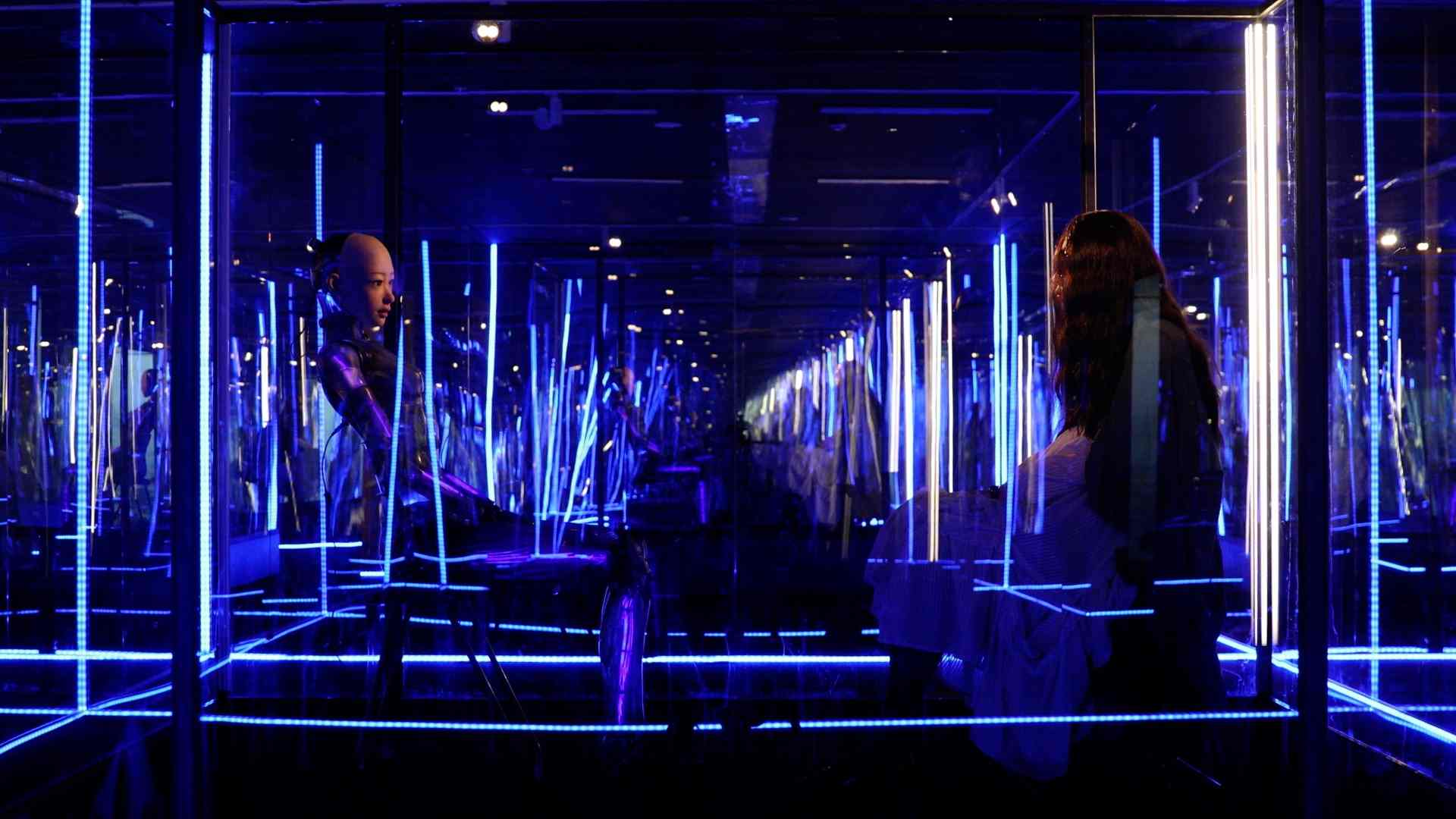
Tim Yip, or Ye Jintian, the world-renowned art director, visual artist, stage and costume designer and the first Chinese to win an Academy award, opened an exhibition exploring science and philosophy questions in Beijing last Saturday.
Instead of being an unreachable master, Tim, the one who sits in front of our camera, is actually a humble, polite and considerate middle-aged man. Aware that the concepts presented in the exhibition may be hard to understand, he was willing to explain more.
The Chinese theme of the exhibition is Quanguan, which means "panorama" or "the entire view," while the English theme is set as "Mirror." To interpret this, Yip gave examples of grass and forest.

Tim Yip during the CGTN interview, April 15, 2019. /CGTN Photo
Tim Yip during the CGTN interview, April 15, 2019. /CGTN Photo
When we regard grass independently, it's only itself; but actually, it's from the forest that it comes, it has its origin and its destiny. "Quanguan" means a single thing can affect the whole, while "Mirror" refers to the fact that part and the whole can reflect each other.
Science and art, a 'difficult' couple
Exploring art in science is not common. Actually, it's also the first time for Tim Yip to create artworks inspired by science. He said it was "difficult."
"I think it always has two different dimensions, of science and art. In science, you must have logic, but you can't have imagination. In art, you can have imagination, but you can't have logic. I think these two coming together is quite difficult," he said.
He said he must find something in common between the two.
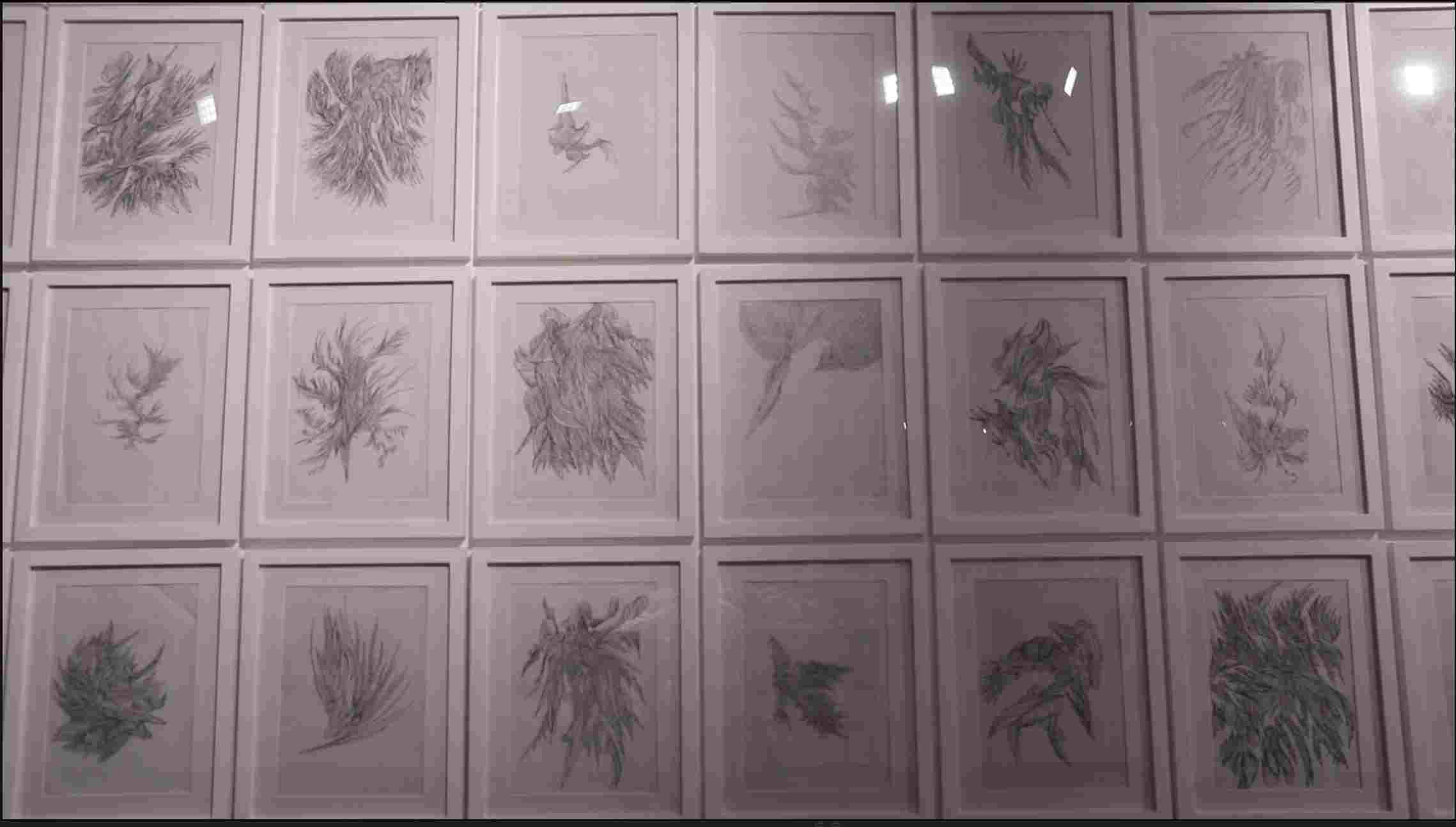
Spiritual DNA sketches by Tim Yip at the exhibition "Mirror." /CGTN Photo
Spiritual DNA sketches by Tim Yip at the exhibition "Mirror." /CGTN Photo
Listed in three sections, the exhibits here cover various art forms, from traditional ones like photographs, sketches, sculptures and costumes, to new media forms like videos and immersive installations.
"Spiritual DNA" is a set of projection images and sketches featuring feather-like irregular patterns. In Tim's words, the Spiritual DNA is something invisible, but does exist, like the layers of a cell.
"Physically we see a chair, we see a table," he said, "Inside, this chair is for writing, is for people to be gathering thought. So it's a reason why these are here. They have meanings. That is spiritual DNA."
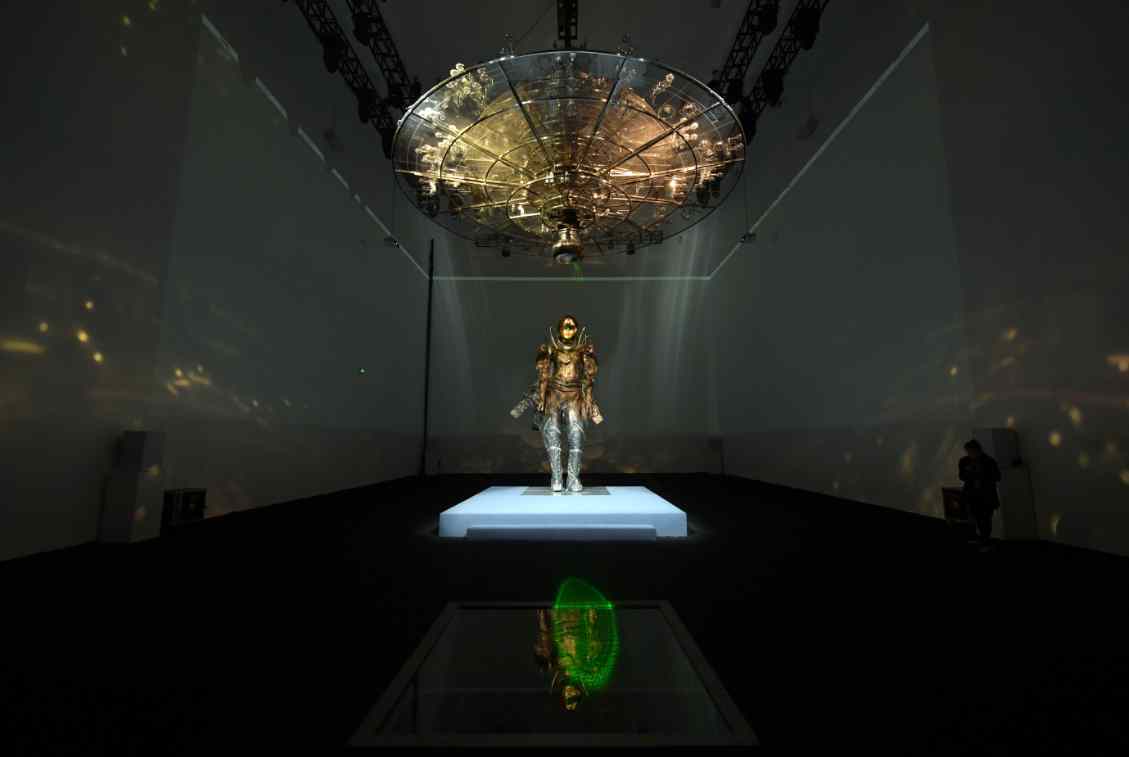
A giant installation called "Suspended City" at the exhibition constructs a future city in space, with a giant Lili standing below. /Photo courtesy of Today Art Museum
A giant installation called "Suspended City" at the exhibition constructs a future city in space, with a giant Lili standing below. /Photo courtesy of Today Art Museum
The exhibition also has an interactive part where the audience can draw their own spiritual DNA from a collection of which Tim Yip would select the best pieces regularly to become part of his exhibition.
The immersive installations, the "Suspended City" and "Robot Lili and Pregnant Lili-Conversation" use light and shadow to create a dim sci-fi-inspired environment, inducing self-reflection and meditation for visitors in this art journey.
Although set in the far future, the Suspended City, in Tim's words, is "something from the really early." Like cells, primitive yet have every essential part for functioning, the city was thus designed.
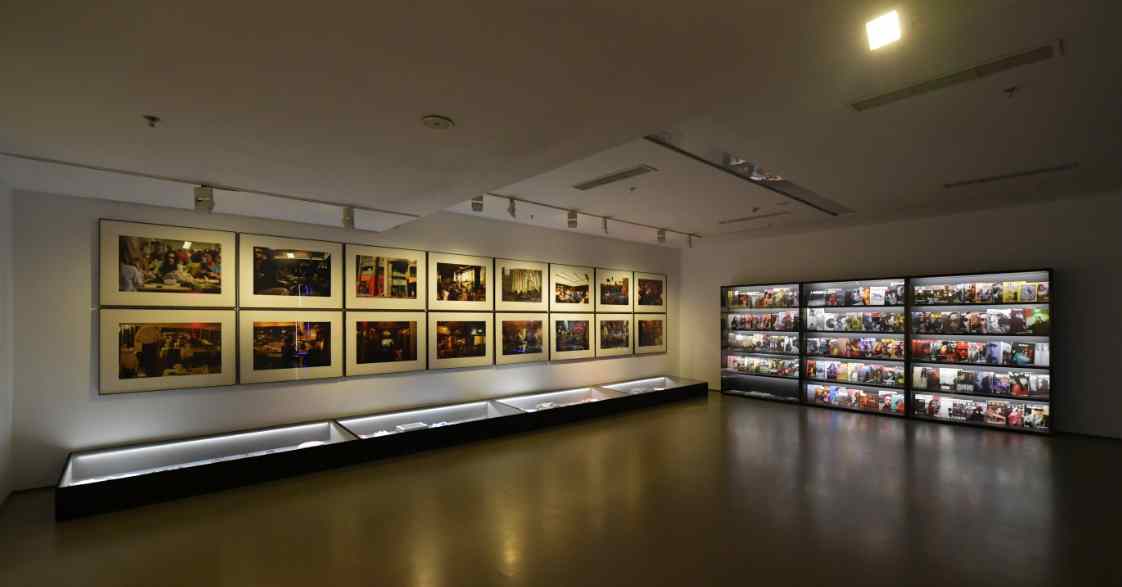
A gallery at the exhibition shows Lili in different areas with different people. /Photo courtesy of Today Art Museum
A gallery at the exhibition shows Lili in different areas with different people. /Photo courtesy of Today Art Museum
Lili is a woman-shaped model that accompanied Tim for years. The artist carried Lili around the world and took thousands of pictures of Lili with the local people as if she was alive and enjoying their activities.
"When we see a movie, there're hundreds of people in the movie theater, but when you see one person is not real, then the whole atmosphere, the whole picture becomes not real," he said.
He described her as "the black hole of time" because she is unreal, "uncertain" – the time and environment she's in become uncertain too.
Obscure yet 'powerful,' the identity for Chinese culture
Tim Yip won an Oscar for the art direction in "Crouching Tigger, Hidden Dragon" in 2001, making him more famous in film than in other fields like theater, costume design and visual art which he's also good at.
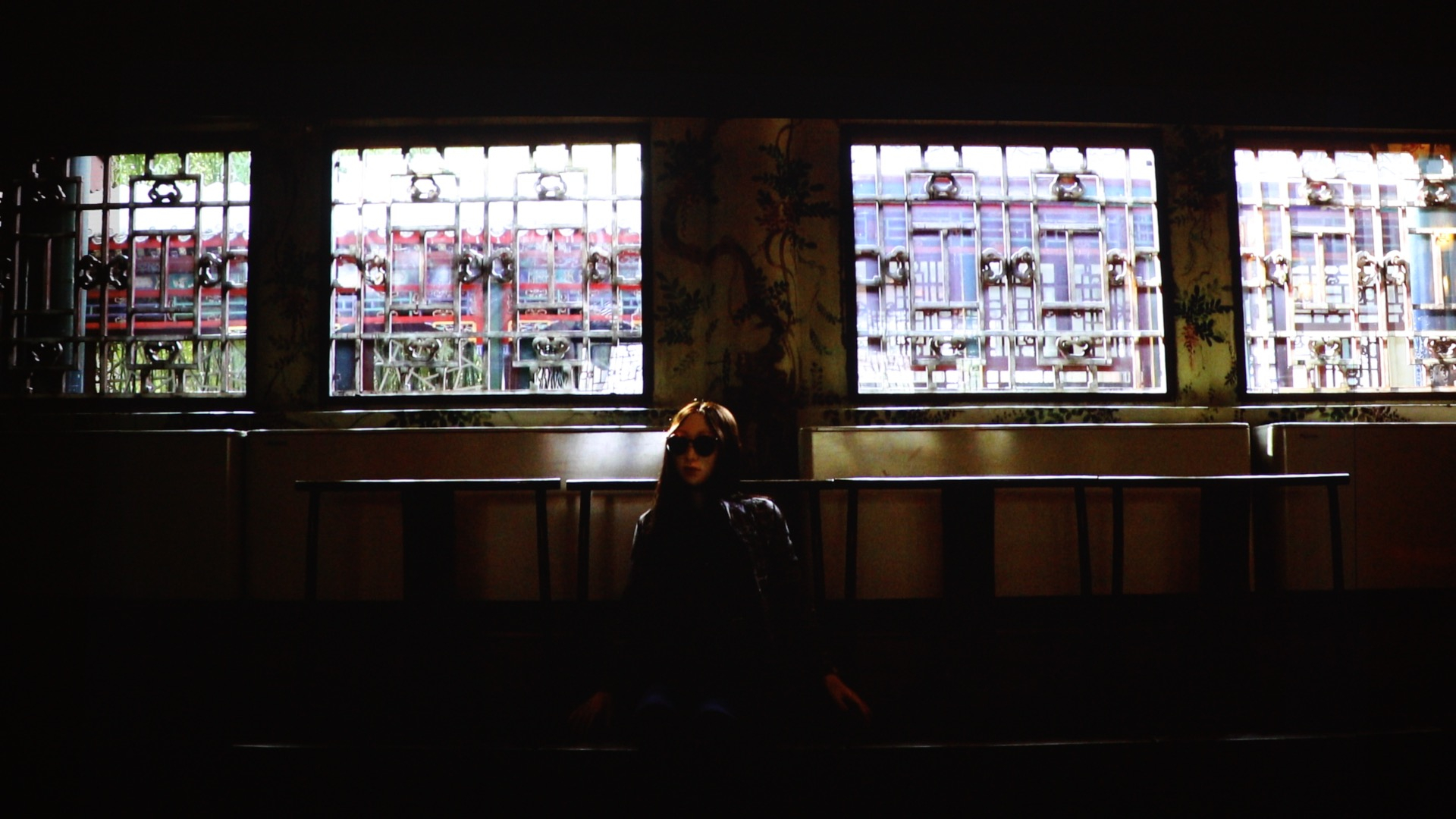
A video projector installation at the exhibition makes it look as if Lili is sitting in front of visitors in a closed room, while curious people outside the window come and go. /CGTN Photo
A video projector installation at the exhibition makes it look as if Lili is sitting in front of visitors in a closed room, while curious people outside the window come and go. /CGTN Photo
He is also the presenter of "New Orientalism" aesthetic, which advocates the original presentations of the unique eastern culture, instead of losing voice to the western world.
For him, the exhibition is also about New Orientalism, about the uniqueness of Chinese culture.
"I've gone really deep into the Chinese philosophy about 'Xu Shi Bing Zhi.' It's something like the existence and non-existence come(are) together. This is anti-logic, right? But this is really a strong philosophy in China, in really early times," Tim said.
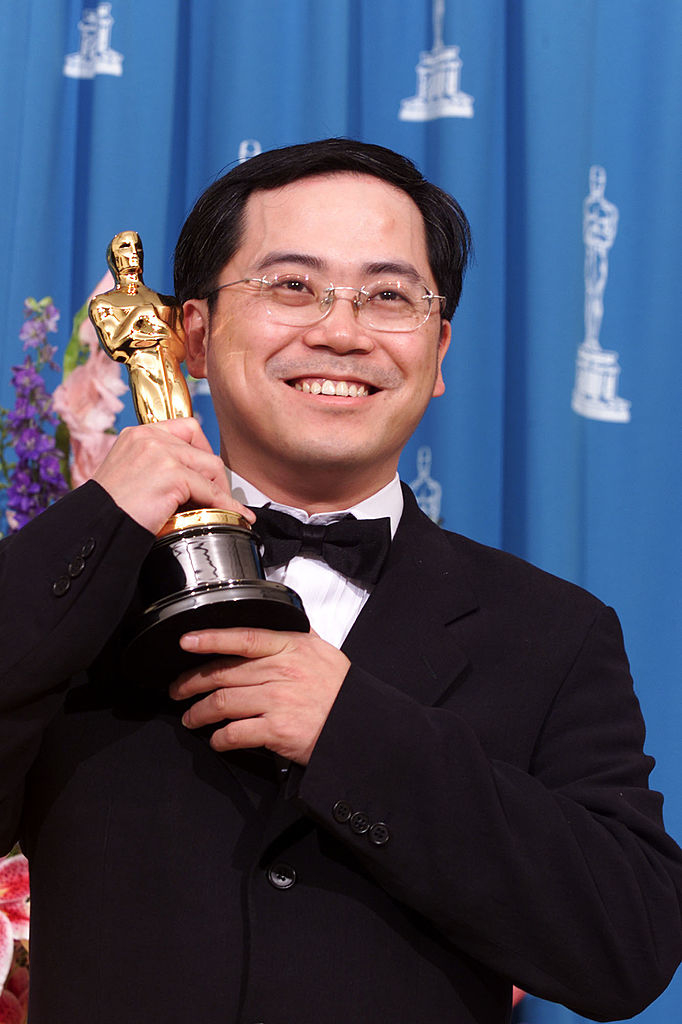
Tim Yip, Academy Award winner for Achievement In Art Direction for his artwork on "Crouching Tiger, Hidden Dragon," poses with his Oscar backstage at the 73rd Annual Academy Awards ceremony at the Shrine Auditorium in Los Angeles on March 25, 2001. /VCG Photo
Tim Yip, Academy Award winner for Achievement In Art Direction for his artwork on "Crouching Tiger, Hidden Dragon," poses with his Oscar backstage at the 73rd Annual Academy Awards ceremony at the Shrine Auditorium in Los Angeles on March 25, 2001. /VCG Photo
Asked about the role Chinese culture plays on the world stage, he used the word "powerful."
He took a character, Li Mubai, from "Crouching Tigger, Hidden Dragon" as an example.
"He's wearing a white thing…he's not showing how rich he is, he's not showing anything," Tim said, "but you can feel the power of it. This what the Chinese have."
The exhibition runs until July 21.
Director: Jiang Qingrui
Video Editor: Zhou Jinxi
Videographer: Zhou Jinxi
Article Written by: Jiang Qingrui
Copy Editor: Bertram Niles, Josh McNally
Chief Editor: Pei Jian, Qin Xiaohu








